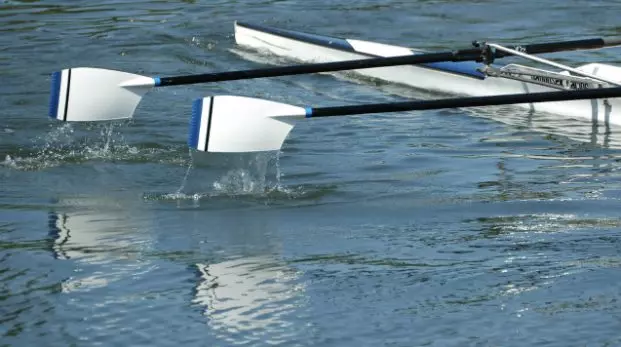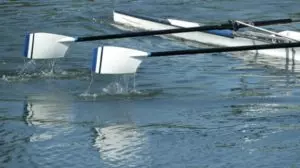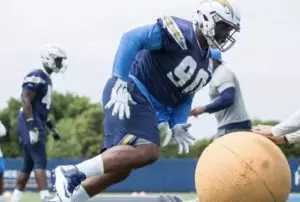When I was offered admission at the University of North Carolina at Chapel Hill, the first email I received on my new school email account had a subject line of “Become a UNC Division I Athlete at UNC-Chapel Hill.” Inside the email was documents inviting me to become the next member of UNC Rowing, a physical form for tryouts, and an insurance form. My first thought was, is this a mistake? Don't they know I'm already committed to the UNC swim team? I have never rowed a day in my life! I wondered why I had received such a confusing email. After asking around, I was informed that every woman athlete admitted to the UNC-CH receives the email on the first day of school. Essentially, the rowing team recruits anyone who checks their email and has a pulse. The email had me interested in the topic of Collegiate Women's Rowing, and I felt I had to do more research.
The model of women's rowing at big, power-five conference schools goes against everything we have learned as high school athletes trying to get recruited for our sport. In general, the pattern goes like this: the bigger the school, the bigger their athletic department, the more competitive and demanding their sports are. Big schools equal better programs, which equals harder to get recruited. That's the case for almost all collegiate sports, with the exception of women's rowing.
The modern wave of women's rowing programs getting scattered across the country began in 1972 with the passing of Title IX. The legislation requires schools to offer women equal opportunities to participate in sports. The law also mandated that schools keep statistics on scholarships, spending, and the number of athletes in each sport, parsed by gender.
Athletic departments needed to balance the numbers because football teams were becoming so big and rich that they risked violating the new law. This situation led to the rapid addition of women's rowing programs across the country, which offset (and saved) college football and allowed schools to comply with Title IX. A codependent relationship between the two was developed. Women got a new sport and eagerly welcomed the opportunity.
Title IX has other benefits; it also led to other women's teams developing at each school. Title IX has made a significant impact on female participation in sports at the college level, and to a certain extent, that right will always be protected. At least one would hope.
Title IX was created to level the playing field and create equal opportunity for both men and women. Though we have come a long way from 1972, collegiate women's rowing programs represent a way in which we are still so far behind in the quest for equality.
Essentially, the development of women's rowing serves as a ploy for athletic departments to get away with their lavish and expensive football programs. At the beginning of each season, athletic directors send their women's rowing coaches a target roster number needed to balance the football roster number. The rosters were filled without much intention for a skilled athlete; as the coaches looked anywhere, they could find women to fill the spots. It is clear that the athletic departments do not care much about the quality of their rowing programs. As long as it exists and is proportional to the football team, that is all that matters.
With this in mind, how are athletic departments, particularly within the schools in the power-five conferences (Big10, Big12, Pac12, ACC, and SEC), providing equal opportunities? Women are not just a number on a roster. They are people, committed athletes, and deserve the same opportunities as male football players, or frankly, the opportunities that any other sport at their school provides. Let me shed light on some of the inconsistencies in recruiting, that illustrate the disparity between women's rowing and other collegiate sports.
In most college sports, the recruiting process can take years to months and involves lots of research and commitment on both the athlete and the coaching ends. In rowing, the recruiting can sometimes involve a conversation that takes five minutes. I spoke with a female student-athlete at an ACC school who recently committed to taking on a fifth-year and row for her school after she spent the past four years swimming. She was approached by the rowing coach at a dining hall during senior year. She left the conversation with a scholarship, a spot on the team, and admission to the school's prestigious graduate business school, where she will pursue an MBA degree in the fall.
“I don't know anything about rowing; I've still never been on the water in a boat. And now I have a scholarship to business school,” the student-athlete said. Her experience is not much different from that of rowers at other power-five conference schools.
At UCLA, which is in the PAC-12, rowers are recruited during the first week of classes as they walk to class on Bruin Walk. Once rowers make the team, they are not allowed to receive any official Under Armour rowing or UCLA Athletics gear until they complete an entire season on the team. This practice illustrates the lack of consistency and retention rate of rowers on their team.
At Wisconsin, in the Big-10, rowing team rosters are upwards of 200 athletes. However, these roster numbers are collected at tryouts, when their turnout is the highest. None of these practices make sense until you understand that the only reason they are in place is to offset college football. The purpose of Title IX, and Women's Rowing as a whole, is to match the large football teams proportionally.
To add to the rigged system, football gets only 85 scholarships while rowing gets 20. Keep in mind that the purpose of Title IX is to provide equal opportunity for women. This information is confusing and telling of what's going on behind the scene.
Ultimately, women's rowing saved college football. Their large rosters that are upwards of 200 people offset the large football teams of the power-five conferences and allow them to comply with Title IX. Rowing is a cheap, and arguably unfair solution to the dominance of football on college campuses. Rowing has fewer scholarships, its coaches get paid a fraction of the millions that top football coaches get paid, and the teams are not even provided enough resources to recruit appropriately. This forces a scenario in which rowing coaches are practically begging for members by sending out mass emails to the student body or approaching female students on their walks to class or as they eat in the dining hall.
Legally, the schools are compliant. But morally, are these athletic departments providing equal opportunities for their male and female athletes? Title IX wasn't created so schools could find loopholes in the system and exploit the power football has over other sports. We need to reevaluate the broken system of NCAA Division I athletics. Though the savior complex is nice, it is a far cry from what one hopes and dreams their college experience to be like.
The tale of women's rowing illustrates clearly that not all sports are created equal. Though the addition of more women's programs may provide some level of opportunity, they are often not taken seriously nor equate in any way to the lavish football and men's basketball programs. There is still a long way to go in the name of equality and opportunity in college women's sports.
The model underlying modern college sports is an intricate and complex regime. Depending on your sources, biases, or values, the model can be considered a hero or a villain to the athletic department and schools they're a part of. It's undeniable that without football, women's rowing and many other women's sports would not have the funding to exist in the capacity that they do today. Athletic departments would crumble, minimizing the opportunities for athletes on a much larger scale.
* Originally published on August 24, 2020, by Allison Goldblatt







